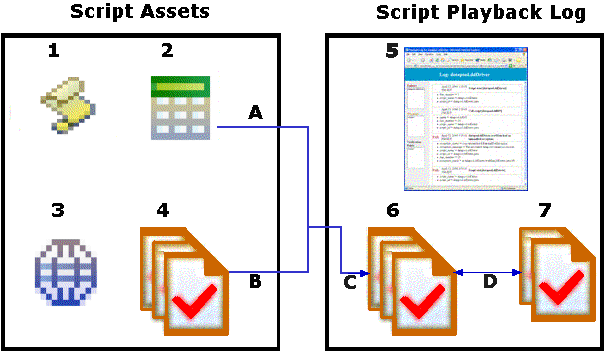Dataset references and verification points
When you create a verification point with a dataset reference, you can supply variable data to make your tests more realistic.
Each time you play back a script with an associated dataset, the script accesses one record in the dataset. The verification point uses the dataset reference to access a variable in that record. At playback, Functional Test substitutes the variable in the dataset for the dataset reference and compares it to the actual results.
The log contains the record of events that occur while playing back a script and the results of all verification points executed. Actual test results (with the dataset reference resolved) that vary from the baseline results are defects or intentional changes in the application.
In the following diagram, the left box represents typical script assets:
(1) Script with an associated dataset
(2) dataset
(3) Object map
(4) Verification point baseline -- A baseline is the captured data maintained with a script. The verification point, in this example, has a dataset reference.
The right box represents the following:
(5) Test log that records the verification points that passed or failed
(6) Expected data, equal to the script's baseline data, with dataset references resolved to the values in the active record at the time the verification test was performed.
(7) Actual data is the data from the software-under-test at the time the verification point is performed.

When you run a script the following events take place:
(A) The verification point accesses the data in the dataset creating the expected result from the baseline and the active dataset record.
(B) The dataset reference resolves and supplies data to the verification point.
(C) The expected result is compared to the actual result.
(D) Expected and actual results are recorded in the log. Any deviation from the expected results are logged as a failure in the test log.